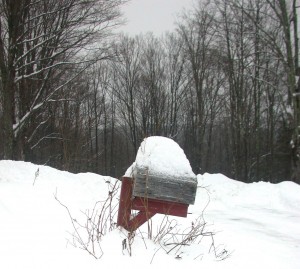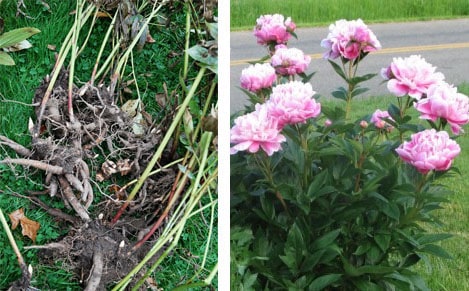By JMMDS
There are some cardinal gardening “rules” that are practically written in stone. Everybody knows them. But does everybody follow them?
Here are some confessions from our studio. We hope you’ll share yours with us.

Syringa vulgaris ‘President Poincare.’ Photo: The Arnold Arboretum of Harvard University.
Anna: You’re supposed to prune lilacs after they finish flowering, and there are good reasons for doing it then; it gives new shoots plenty of time to develop next year’s blooms. Last year, however, I pruned mine in very early spring. It was much easier to see the dead wood that needed to be removed, as well as the structure of the shrubs, before they leafed out. I might have sacrificed a few flowers, but they still looked good.

Erica sees this and goes off in search of her seed packets. Photo: Erica Bowman.
Erica: I throw caution to the wind and plant the vegetable garden as early as possible. True, frosts may come, but seeds are cheap, and having early squash is worth the effort. If and when I do lose a crop to frost, I just replant directly. I always start more of the slower growers than I need indoors so that I can replace the seedlings if necessary. Those include peppers, tomatoes, and melons. I also plant pea seeds right through the snow!

L: Lettuce seedlings, densely sown. Photo: One Green Generation. C: Tomato seedlings in newspaper pots. Photo: Walnut Spinney. R: “When we grow up we want to be pesto!” Baby basil plants. Photo: Homely Capers.
Jana: When it comes to starting seeds, I usually do what the packets tell you not to do—I will put more seeds than recommended in a cell or flat, especially with basil. I overcrowd it, and it grows strong and healthy! (Then, of course, there is more work to divide them.) I do the same with tomatoes, peppers, snapdragons, and others. All of these seeds grow better for me when I crowd them and tend to them a second time before planting them in the garden. But I have plenty to share! (I like to grow basil as a crop rather than an herb anyway…)

Peonies don’t need to be divided often, but when they begin to flower less abundantly (or you decide you need more peonies elsewhere), it’s time. L: Peony roots, dug up and ready to be divided with a clean, sharp knife. Photo: Suzy Bales’ Down-to-Earth Gardener. R: Gorgeous, healthy peonies. Photo: Cold Climate Gardening. Click here for helpful instructions on dividing perennials.
Jennifer: Everybody knows you don’t move peonies in the spring. I challenge you to find a gardening book that doesn’t say that peonies must be moved in the fall. And yet…what if you can’t move them in the fall? What if, every fall your life is so hectic that there is no way that you are going to find time to move those peonies, and they are so overgrown they are about to swallow everything else in your garden? Last year, I moved some peonies in April, and guess what? They bloomed beautifully a month later. And this year they’re still alive—and spreading. And I’m getting ready to move some more, because I have a little time now, but I’m pretty sure I won’t in September.

The next big thing in Vermont gardens? Photo of the fabled Longsheng rice terraces: Wikipedia.
Julie: You’re supposed to plant vegetable gardens on south-facing level ground if possible, right? Well my best spot was due south, but certainly not level. I remembered all the beautiful terraced rice paddies and fields on slopes that you see throughout Asia and thought, why not? I planted my beds in banked tiers, moving up the south-facing slope. Then, of course I subverted the very reasonable rule of thumb that you should plant beds in squares or rectangles for ease of fencing, making raised beds, tilling, and making easy-care paths. Well, my terraced vegetable garden is a nearly perfect oval, since everything else I’ve done on our property is a curve to meld with our circular pond. I’m still learning how best to deal with what I’ve wrought!
Do you have a myth-busting gardening confession of your own? Please share in our Comments!






Splendid idea, Julie, as confession is good for the soul.
Rules, schmules. Gardening is much like writing: First learn the rules; then break them at will. One of my favorite broken rules: Prune in late winter to early spring.
As I break that one, I always think of the bonsai master who says, when asked when we should prune: “Whenever the knife is sharp.”
Yes, Lee, and transplant when you have a shovel in hand!! (but don’t forget to water….)